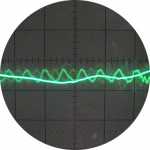Determining correct flow rate for a heat pump
Following on from the flow sensor topic, I was hoping for some more guidance around what flow rate(s) should my primaries be set to, given the Ecodan databook (v6) information and how it differs with ambient temperature.
The 6kw outdoor unit flow rate range in the databook is stated as 8.6 to 17.2 l/min, with a 'recommended' of 10.8 (the databook noting this recommended flow rate is "to ensure optimal heating operation (condition: inlet/outlet temperature difference dT = 8K)."
The first point to note is the deltaT of 8K(/8C), not 5C as is widely acknowledged/understood on this forum!
However it also states two sets of 'capacity' values, one at OAT of 7C and one at 2C - with the capacity/COP/flow of 5.00kW/5.10/14.3lpm at 7C and 6.00/3.75/17.2 at 2C OAT respectively.
The second point to raise would be, what about at an OAT of say 12 or 24C, and conversely below zero - such as -3C?
Thirdly, it would not be surprising if the flow rate needed to be different for just DHW compared with demand of two heating zone pumps, though it could be said that the heating pumps should have been chosen/configured to work optimally at the same flow rate and therefore it isn't a consideration.
Finally, is the simple answer, as has generally been stated elsewhere on the forum, still just to set it such that the dT (of 8C? 5C?) is maintained, and adjust the flow settings on the pump if the OAT affects the delta between seasons?
Have a look at John Cantor's excellent online calculators here (specifically the flow rate calculator):
https://heatpumps.co.uk/calculators/
Heat (kW) = Flowrate (Litres/sec.) x 4.2 (Specific heat of water) x temperature rise (dt)
So for a given heat output from your ASHP, flow rate is directly proportional to dT (between flow and return). As the flow rate drops, the dT will increase, and vice versa.
Some systems use fixed flow pumps, so your flow rate will be static (some are adjustable with maybe 3 settings). Others will use PWM pumps which are able to adjust their flow rates, and the heat pump will attempt to control the flow to meet a target dT.
Samsung 12kW gen6 ASHP with 50L volumiser and all new large radiators. 7.2kWp solar (south facing), Tesla PW3 (13.5kW)
Solar generation completely offsets ASHP usage annually. We no longer burn ~1600L of kerosene annually.
so conversly, flowrate = heat / 4.18 / deltaTHeat (kW) = Flowrate (Litres/sec.) x 4.2 (Specific heat of water) x temperature rise (dt)Posted by: @old_scientistSo for a given heat output from your ASHP, flow rate is directly proportional to dT (between flow and return). As the flow rate drops, the dT will increase, and vice versa.
Using 6kW as power ('heat'), 6 / 4.18 / 8 * 60 (to get lpm) = 10.77lpm, or the 10.8 I quoted - nice. (The same equation gives the 17.2lpm if I use deltaT of 5)
Yes - do you know if using a Grundfos (with three modes + three speeds in each mode) capable of / using PWM would be continuously-variable, or just step through the three speeds the pump mode would be set in at the time? Can you share any info as to how the FTC controls pump speeds (settable separately for DHW + heating between 1 and 5) on its cylinders?Some systems use fixed flow pumps, so your flow rate will be static (some are adjustable with maybe 3 settings). Others will use PWM pumps which are able to adjust their flow rates, and the heat pump will attempt to control the flow to meet a target dT.
Nothing is straight forward, delta T will change depends on which way you heat, for example radiators will take a wider dT than UFH.
Example
Target room temperature
Well insulated house UFH. Return temp from floor does not go below room target temp. So no lower than 21. If you set dT at 8 your min flow temperature becomes 29. Plus your compressor restart hysterisis is dT plus a further temp delta. So now your Min flow temp is about 29.5. if you operate with dT 4 your min flow temp becomes 25.5 which is better for CoP and not over heating the house.
So dT is horses for courses. You get a better CoP with the widest dT you can operate. But you can easily short cycles at lower loads.
My 6kW heat pump ramps from 14 l/s to 18l/s doing UFH over a 10 min period.
Yes - do you know if using a Grundfos (with three modes + three speeds in each mode) capable of / using PWM would be continuously-variable, or just step through the three speeds the pump mode would be set in at the time? Can you share any info as to how the FTC controls pump speeds (settable separately for DHW + heating between 1 and 5) on its cylinders?
I don't I'm afraid - you could try looking up the specs of the Grundfos pumps online.
My own system uses fixed flow rate Wilo pumps, with 3 different curves or modes, and 3 different speeds. I've just left them in the standard fixed mode, and have tried the 3 different speeds to see the effect on flow rates, and hence dT. These are not PWM pumps.
I think systems that do use PWM pumps, will attempt to vary the pump speed to keep dT constant at whatever it has been set to - so if you've set the system with a desired dT of 5C, and the heat pump is producing 5kW of heat, the system will attempt to adjust the flow rate to be 14.3L/min. If the heat pump output should rise to 6 kW, the system would attempt to increase the flow rate to 17.1L/min to keep the dT at 5C.
I wouldn't become too fixated on it - as long as you have sufficient flow rate to transfer the required heat around your system, dT will be what it is. My dT is low at ~2.5C with a fixed flow rate of ~25-26L/min when the heat pump is just idling putting out around 4.5kW but rises to 4C as the heat output rises to 7K and again to 5C at 9kW output. I could turn my pumps down slightly (to around 21L/min), and dT would increase a whole half degree to 3C at low (4.5kW) output, but I wouldn't want to run a flow rate much below that.
Edit: I need slightly higher flow rates for the same dT due to use of glycol in my system.
Samsung 12kW gen6 ASHP with 50L volumiser and all new large radiators. 7.2kWp solar (south facing), Tesla PW3 (13.5kW)
Solar generation completely offsets ASHP usage annually. We no longer burn ~1600L of kerosene annually.
Posted by: @rhh2348Thirdly, it would not be surprising if the flow rate needed to be different for just DHW compared with demand of two heating zone pumps, though it could be said that the heating pumps should have been chosen/configured to work optimally at the same flow rate and therefore it isn't a consideration.
Optimising flow rate for DHW heating is something I'd been thinking about over the summer, as we are only heating DHW at that time.
My simplistic thinking is that you'd want to try to keep dT quite narrow/small so would favour a higher flow rate. My reasoning, equally simplistic, is that if I want to heat my DHW to 50C, and I have a dT of 5C, to achieve that I may need a final flow temp (LWT) of 55C and return of 50C. If dT were 10C, I'd need a flow temp of 60C and return temp of 50C, so I'd have to heat the LWT higher to deliver that same final DHW tank temp?
I tried running some tests but there were too many other variables (OAT, DHW tank starting temp etc) making it difficult to compare truly like for like runs.
Happy to hear other's views and to have my thinking corrected / adjusted as appropriate.
Samsung 12kW gen6 ASHP with 50L volumiser and all new large radiators. 7.2kWp solar (south facing), Tesla PW3 (13.5kW)
Solar generation completely offsets ASHP usage annually. We no longer burn ~1600L of kerosene annually.
Posted by: @rhh2348Can you share any info as to how the FTC controls pump speeds (settable separately for DHW + heating between 1 and 5) on its cylinders?
Hi I assume you have found the settings for pump speeds in the settings menu as you mention settings 1-5. if you have a newer FTC 6 then you can set the pump speed separately for heating and dhw.
When the heatpump is running you can go into the running information menu and type in code 540 this gives you the current flow rate. You can then see how changing the settings 1-5 affects that flow rate. It is fixed and the heatpump can’t change it dynamically you just have to set it at an appropriate speed for your system
Posted by: @old_scientistOptimising flow rate for DHW heating is something I'd been thinking about over the summer, as we are only heating DHW at that time.
There is a video from heat geek about optimal settings for DHW. To get best CoP it more about the cylinder coil being able to strip away as much energy as possible so return temp stays low, for best CoP. Worth finding and watching.
Mine setting are preset and not adjustable, so pump runs at full speed for DHW, so about 1.5m³/h, heat pump adds heat and keeps dT at about 3.5. Seem to get a CoP of about 2.5 to 3.5.
This may seem like a daft question but can I please check - one should always aim for their systems to have a return temp of <target temp> + dT + hysterisis delta?[snip]ExamplePosted by: @AnonymousTarget room temperature
Well insulated house UFH. Return temp from floor does not go below room target temp. So no lower than 21. If you set dT at 8 your min flow temperature becomes 29. Plus your compressor restart hysterisis is dT plus a further temp delta. So now your Min flow temp is about 29.5. if you operate with dT 4 your min flow temp becomes 25.5 which is better for CoP and not over heating the house.
So dT is horses for courses. You get a better CoP with the widest dT you can operate. But you can easily short cycles at lower loads.
In the example above, if my flow was 30.5 rather than 25.5, would the floor get the room to target temp quicker, or would it get there at the same time but overshoot and make the room too warm?
If I want my flow at 25.5, I assume I then adjust the w/c 'curve' so that the flow remains at 25.5 depending on the OAT?
I lowered my flow rate to c. 11L/m for the Ecodan and the heat/power output went down to c. 3.8kW :-/ The deltaT remained around 5 so I assume Ecodan's algo tries to achieve 5 regardless, countering their own documentation referring to 8C/K.Using 6kW as power ('heat'), 6 / 4.18 / 8 * 60 (to get lpm) = 10.77lpm, or the 10.8 I quoted - nice. (The same equation gives the 17.2lpm if I use deltaT of 5)
Posted by: @rhh2348In the example above, if my flow was 30.5 rather than 25.5, would the floor get the room to target temp quicker,
Yes, but that is thinking like gas boiler logic, not heat pump logic, you need as low a flow temperature as possible. Also the further you are away from ideal flow temperature the more likely to overshoot, then depending on your thermostat, screed thickness, insulation levels outside temp you could also undershoot as the system can't keep up.
Watching the discussion on dT. An observation.
As you add heat to the floor the return temperature will rise, the heat pump should let this occur and add more heat to the flow, keeping your dT stable. Once dT and target temp are at point where your settings say is correct, the heat pump should modulate down to keep target and dT stable. If your heat required is below min modulation, the dT will get smaller, and the flow temperature increase, until flow hits your upper limit. Mine can come down to about 3 dT.
I asked the question to gain more understanding in the context of the flow/return temps rather than that being what I wanted to/was planning to achieve!Posted by: @AnonymousPosted by: @rhh2348In the example above, if my flow was 30.5 rather than 25.5, would the floor get the room to target temp quicker,
Yes, but that is thinking like gas boiler logic
On the basis when OAT gets lower, more heat is lost from the room, would the floor flow temp need to go up (perhaps even to 30.5C) to keep up with losses or if it's kicking out 21C heat all the time the room should broadly stay at 21C? Would the flow temp need to increase just to maintain the floor's own temperature at 21 C, or does it need more to then maintain the room's temp?
- 26 Forums
- 2,367 Topics
- 53.7 K Posts
- 146 Online
- 6,042 Members
Join Us!
Worth Watching
Latest Posts
-
RE: Solis S6-EH1P8K-L-PLUS – Why I Chose It and What I’ve Learned So Far
@majordennisbloodnok To be honest, when I spoke with...
By Batpred , 6 hours ago
-
RE: Changing from 4-port buffer to volumizer
@andy1618 see the very sage advice from @editor above. ...
By JamesPa , 9 hours ago
-
RE: New Fogstar 15.5kWh upright solution
The video shows the JK balancer, but the connection of ...
By Batpred , 11 hours ago
-
RE: Ecodan unable to hit legionella target temp - what's the consensus?
@9jwr9 Hi, yes this is the issue with every (stand alon...
By ASHP-BOBBA , 12 hours ago
-
RE: Help me keep the faith with my air source heat pump installation
@adamk FWIW I managed unintentionally to 'coax' mine in...
By JamesPa , 13 hours ago
-
RE: Help needed with Grant Aerona 3 issues
Ok please post back once experiment complete. Give it ...
By JamesPa , 13 hours ago
-
RE: Octopus Cosy Heat Pump Owners & Discussion Thread
You are in essence right. Adia only works with selecte...
By JamesPa , 14 hours ago
-

No, you haven’t missed out, @batpred. This thread’ll st...
By Majordennisbloodnok , 15 hours ago
-

RE: Tesla Powerwall – More of a ‘Luxury’ Than an ROI Winner!
Also, though they weren’t prepared to match the price t...
By Toodles , 15 hours ago
-
RE: How long will your energy contract last?
My INTELLI-FIX-12M-25-08-29 has less than 12 months to ...
By Batpred , 16 hours ago
-

RE: GivEnergy 2025 forthcoming batteries and inverters
Then, perhaps @toodles , you should've made a submissio...
By Transparent , 16 hours ago
-
RE: Balancing financial efficiency and comfort using the Octopus Cosy tariff
I am wondering if anyone with an EV could find the 7p/k...
By Batpred , 16 hours ago
-
Possibly, but it would also reduce DeltaT across the em...
By JamesPa , 16 hours ago
-

RE: ASHP sizing - value of Heat Transfer Coefficient
@cathoderay It was reminiscent of the BBC Open Universi...
By Toodles , 17 hours ago
-
-

@morgan They are unsupervised these days, can’t get the...
By Toodles , 4 days ago
-

RE: Setback savings - fact or fiction?
Exactly. We only need to compare conditions, to decide ...
By cathodeRay , 5 days ago
-
RE: Need Help Optimising My Rushed ECO4 Install: 12kW Bosch Heat Pump
Welcome @mickamills We too have an oversized 12kW Sa...
By Old_Scientist , 5 days ago
-
RE: My Powerwall 3 Consumes 3-4 kWh/Day in Self-Consumption: Is This Normal?
@caron I can confirm that the power usage of the PW3 is...
By Old_Scientist , 5 days ago





